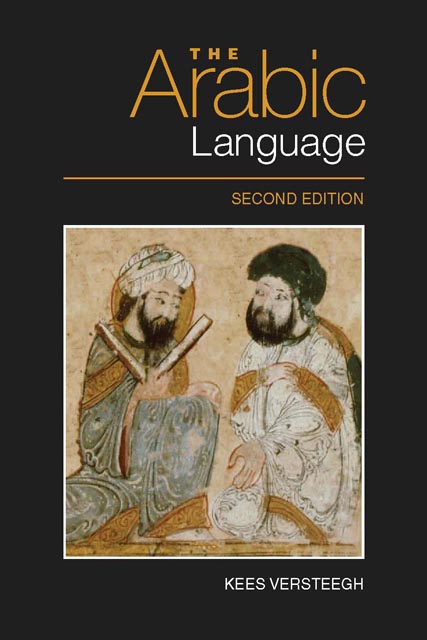Book contents
- Frontmatter
- Contents
- Preface to First Edition
- Preface to Second Edition
- List of Figures and Maps
- List of Tables
- Note on Transcription and Glossing
- 1 The Study of Arabic in the West
- 2 Arabic as a Semitic Language
- 3 The Earliest Stages of Arabic
- 4 Arabic in the Pre-Islamic Period
- 5 The Development of Classical Arabic
- 6 The Structure of Arabic
- 7 The Arabic Linguistic Tradition
- 8 The Emergence of New Arabic
- 9 Middle Arabic
- 10 The Study of the Arabic Dialects
- 11 The Dialects of Arabic
- 12 The Emergence of Modern Standard Arabic
- 13 Diglossia
- 14 Bilingualism
- 15 Arabic as a Minority Language
- 16 Arabic Pidgins and Creoles
- 17 Arabic as a World Language
- Bibliography
- List of Abbreviations
- Index
17 - Arabic as a World Language
Published online by Cambridge University Press: 18 November 2022
- Frontmatter
- Contents
- Preface to First Edition
- Preface to Second Edition
- List of Figures and Maps
- List of Tables
- Note on Transcription and Glossing
- 1 The Study of Arabic in the West
- 2 Arabic as a Semitic Language
- 3 The Earliest Stages of Arabic
- 4 Arabic in the Pre-Islamic Period
- 5 The Development of Classical Arabic
- 6 The Structure of Arabic
- 7 The Arabic Linguistic Tradition
- 8 The Emergence of New Arabic
- 9 Middle Arabic
- 10 The Study of the Arabic Dialects
- 11 The Dialects of Arabic
- 12 The Emergence of Modern Standard Arabic
- 13 Diglossia
- 14 Bilingualism
- 15 Arabic as a Minority Language
- 16 Arabic Pidgins and Creoles
- 17 Arabic as a World Language
- Bibliography
- List of Abbreviations
- Index
Summary
Introduction
At a rough guess, approximately 200 million people usea variety of Arabic as their mother tongue. But thedomain of Arabic does not stop at the boundaries ofthe Arabophone area. Throughout history, speakers ofArabic have frequently come into contact withspeakers of other languages and affected theirlanguage, in its vocabulary or even in itsmorphosyntactic structure. In situations of contactbetween speakers of two languages, the direction ofthe influence and its nature are determined by therelative prestige of both languages and by thehistory of their cohabitation. Wherever Arabic isspoken as a minority language in a region whereanother language is the prestige language, it isaffected by the language of the host country, bothin the so-called language islands and in theemigration (cf. above, Chapter 15). But as aninternational language it has in its turn affectedother languages within its sphere of influence, inlarge parts of Africa, in Turkey, in Iran, in SouthAsia and in South-east Asia.
In these regions, Islam was introduced as the newreligion, but the language of the Arabs did notsupplant the indigenous language as it had done inthe central areas. Farsi (New Persian), forinstance, was originally the language of one of theperipheral areas of the Sasanian Empire, also calledDari, while the official language was Middle Persian(Pahlavi). Subordinate to Arabic during the firstcenturies of the Islamic conquest, Pahlavi continuedto be used until the ninth century, but wassupplanted in the tenth century by Farsi as thenational language of Iran under the dynasty of theSamānids (cf. above, pp. 81f.). From the beginningof the conquests Farsi had been used as the languageof religious instruction to those converts who hadnot (yet) mastered Arabic, and it is therefore notsurprising that it became the carrier of thereligious message even further east. In Asia, therole of Arabic was restricted to that of thelanguage of the Qurʾān; many Arabic loanwords in theindigenous languages, as in Urdu and Indonesian,were introduced through the medium of Persian.
In all Islamic countries, the influence of Arabic ispervasive because of the highly language-specificnature of Islam.
- Type
- Chapter
- Information
- The Arabic Language , pp. 313 - 332Publisher: Edinburgh University PressPrint publication year: 2014

